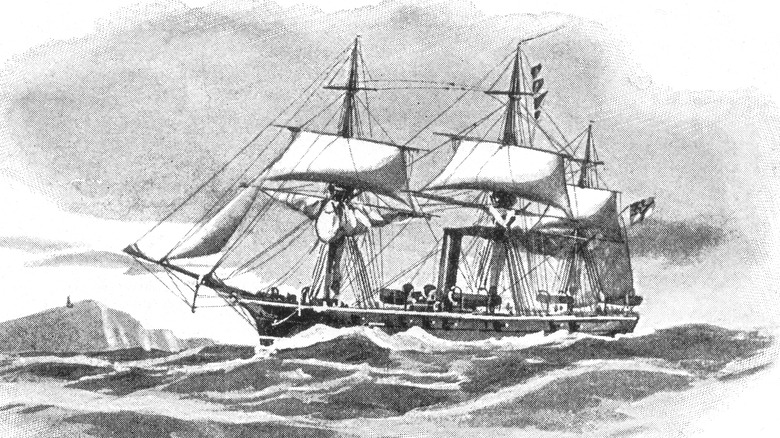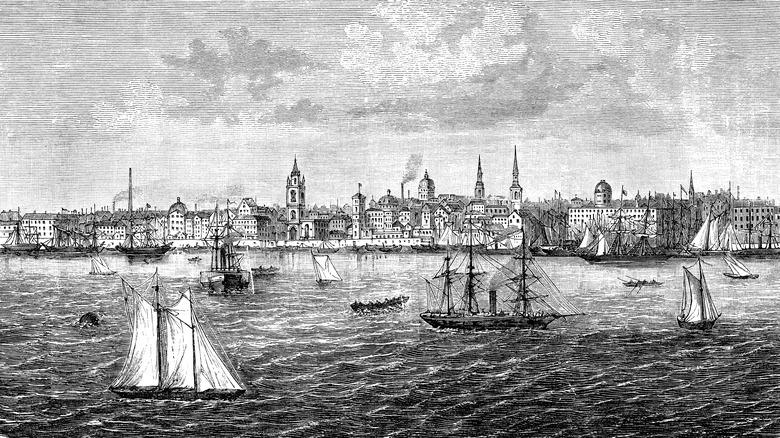What Was The First Steamship To Cross The Atlantic And How Long Did It Take?
Thousands, perhaps millions of people cross the Atlantic Ocean in mere hours every day. Planes can do it in six hours, modern ocean liners can make the crossing in only seven days, and even large freighters can do it in ten. In the late 18th and early 19th centuries, it was a much different story. It could take a sailing ship three to six weeks to travel from Europe to North America, but steam ships changed everything.
The first ship to embark on a transatlantic crossing had an unlikely start — and wasn't supposed to be a steamship at all. The Savannah is considered to be the first steamship to make the crossing, and it did it only 29 days. This unique ship was constructed in 1818 as a sailing ship. Steam machinery and paddle wheels were added under instruction by its captain, and one year later the ship successfully crossed the Atlantic. While some argue that because it only used steam for part of its voyage, this record belongs to another ship, but many early steamships also used sails.
The 98-foot Savannah was constructed in New York by a company called Crocker and Fickett. She was captained by a man named Moses Rogers and owned by Scarborough and Isaacs out of Savannah, Georgia, hence her name. The interior was quite luxurious for the time, with imitation marble floors, warm carpets, and tapestries on the walls. There were 16 state rooms with two berths each, and rosewood and mahogany panels.
A historic voyage
The historic sailing from Savannah, Georgia to Liverpool, England was delayed for days by bad weather and trouble recruiting crew. It finally left port on May 22 with 19 crew and no passengers or cargo. More than 100 years later, in 1933, President Franklin D. Roosevelt declared that date as National Maritime Day in recognition of the first successful steam crossing of the Atlantic.
It took the Savannah 29 days to reach Liverpool. Historical records indicate that it only used the steam engine for about 80 hours due to limited coal, though it must have been under power as it drew closer to its destination. The telegraph station at Cape Clear on the coast of Ireland reported a ship on fire in June 1819. Rescue ships were dispatched, only to find the steamship Savannah rather than a ship in need of aid. After docking in Liverpool, the Savannah was a bit of a local sensation. It spent 25 days there before moving on to Denmark, Sweden, and even Russia. The Swedish king was so impressed with the Savannah that he offered to buy it, but Captain Moses Rogers turned him down.
The Savannah eventually returned home and though historic, the trip was considered a financial failure. The owners were forced to sell her, remove the engine, and relegate her as a sailing ship until sunk in 1821. All that remains of the Savannah today is her logbook, which is owned by the Smithsonian but not currently on display.

